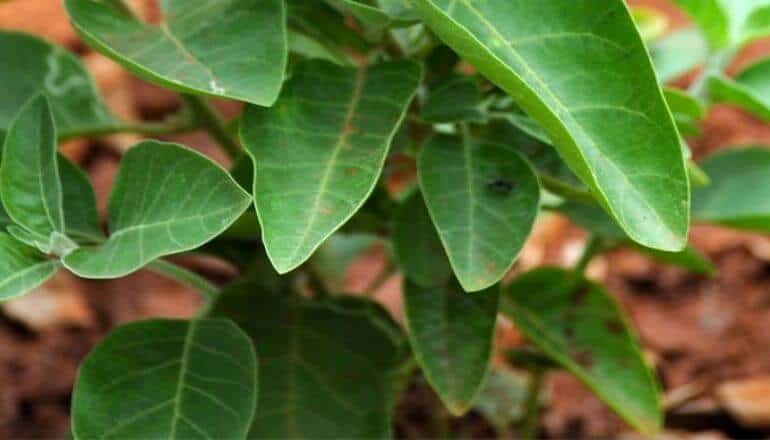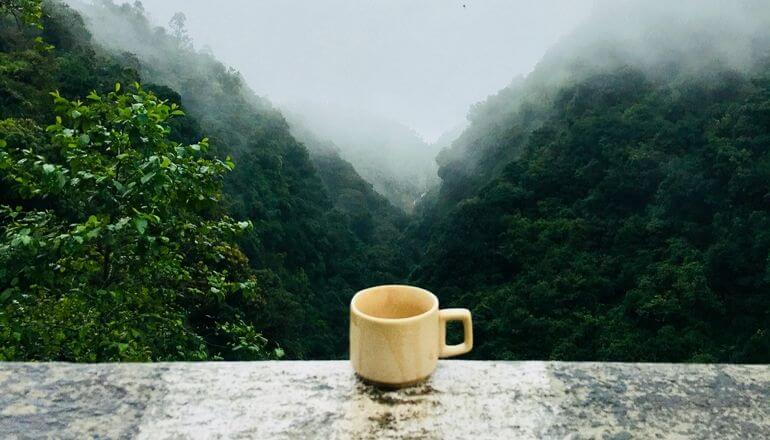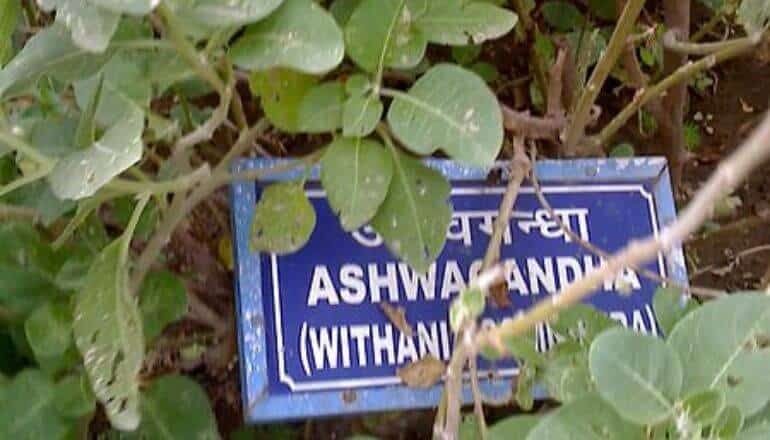*This Article May Contain Affiliate Links* See our Affiliate Disclosure for more Info
Welcome to our blog post on how to make Ashwagandha tea! If you’re looking to incorporate this wonderful herbal tea into your routine, you’ve come to the right place. In this guide, we’ll walk you through the step-by-step process of brewing Ashwagandha tea, ensuring that you’ll have a delightful and soothing cup every time. So grab your favorite mug and let’s get started on this aromatic and healthful journey together!
Looking For Your Next Favorite Tea? Check Out The Great Teas, Blends, and Herbal Infusions at the Art Of Tea. They have teas for every taste and occasion.
Table of Contents

Make A Great Cup Of Ashwagandha Tea Every Time
To get a great cup of ashwagandha tea you are going to need a few tools to get the most out of your tea. You will notice a difference in your tea when you use the best water and ashwagandha root available. Let’s dive into some of these items to consider when you make your cup of this wonderful herbal tea.
- Use High-Quality Spring Water
- 2 Teaspoons Of Ashwagandha Root or Ashwagandha tea bags
- Steep Covered For At Least 10 Minutes
- Use 95°C/203°F Water.
Use The Right Water For Your Ashwagandha Tea
The first thing you want to take into consideration when preparing to make your cup of ashwagandha tea is the water that you use. The water you use for your cup of tea will have a profound impact on the overall taste of your tea.
Using mineral water will leave your tea flat and suppress some of the natural flavors of the ashwagandha. Avoid using it whenever possible. The two types of water that you want to use are good bottled spring water and filtered tap water.
Bottled spring water is probably the best choice. It has a nice balanced pH that is going to allow your tea to express itself in your cup. The issue with bottled spring water is the bottle. You will burn through a lot of plastic bottles. If that is an issue then filtered tap water would be a better option.
Filtered tap water is very close to spring water as long as your filters are in good condition and remove a lot of the additives that are common in tap water. Getting these out of the water is imperative to making your ashwagandha tea taste as it should.
Is Using Tea Bags For Ashwagandha Tea Ok?
Using a bag for any type of tea is usually okay. Ashwagandha tea is no exception. I have used bagged tea for many a cup of herbal tea and find it to be on par with loose leaf a good amount of the time. For green tea, I tend to prefer loose leaves but for most herbal teas bags work very well. The important thing to remember when using bagged tea is that you want the teabags to be unbleached and have no chemicals that can influence the taste of the tea.
Is Loose Ashwagandha Root The Way To Go?
I like to use loose herbal ingredients whenever possible. But it is a personal preference. If you enjoy the ease and taste of bagged tea then, by all means, use it. There is not much of a taste difference as far as I can tell when comparing herbal teas using bags or loose leaves.
There are exceptions where loose-leaf is far superior but for ashwagandha, It doesn’t matter much, to me at least. I typically use loose herbal plants, like ashwagandha, and let them steep directly in the water. I simply strain the ashwagandha root out and enjoy my tea. This brings us to our last option tool.
Should You Use An Infuser?
I do not usually use a tea infuser. I like to allow my ashwagandha root the space it needs to absorb the hot water and expand until it is ready to unleash its full flavor into my tea. However, there is nothing wrong with using one. It makes removing the ashwagandha root from your tea much simpler.
The metal or material that the infuser is made out of might have a limited impact on the taste of the tea, but I have never really noticed it. Be sure to find a high-quality infuser that you are going to enjoy using. You can find more info on tea infusers here.

Ashwagandha Tea Steeping Essentials
There are a few essential things to consider when attempting to craft a great cup of ashwagandha tea. If you stray a little bit from the suggestions it’s going to be fine ultimately you need to adjust each one of these measurements so that the tea that you make is going to be perfect for your particular taste. Think of these as a general starting point for making that wonderful cup of ashwagandha tea for yourself.
The Water Temp For Ashwagandha Tea
The water temperature for steeping your ashwagandha tea is often overlooked when steeping a cup of ashwagandha tea. But it’s not as critical as it is with some other regular teas, especially a more delicate as green tea (check out some of our favorites) or white tea.
For ashwagandha to eat you can actually get a pretty good cup of tea just by using boiling water and steeping your ashwagandha root in that. However, for a really great, that’s what kind of tea I like to let that water cool just a little bit so that it’s not quite at boiling temperature when you add your route in for your cup of tea.
There is the school of thought that says you can take the ashwagandha root put it into boiling water and let it boil on the stove with the root in it. I’m not personally a fan of that but it is certainly an option if you want to make a large batch of ashwagandha tea.
For me, the ideal temperature is around 95°C/203°F.
Here is a handy Celcius to Fahrenheit conversion tool.
This temperature is just under the boiling point but it lets it cool down enough so that you’re not scorching your ashwagandha root when you go to steep it.

The Best Ashwagandha Tea Steep Time?
How long you decide to stay pure ashwagandha tea is really going to be a personal choice. Typically the longer you steep herbal teas the more flavor you’re going to get out of them up to a point. After that, the tea can start to get a little bit bitter if you over-steep them. The good thing about ashwagandha tea and most other root herbal teas is it they are very hardy and it’s very tough to over-steep them.
With that in mind, I think that you get the best out of your ashwagandha root if you steep it for at least 10 minutes. This is a pretty long steep even among herbal teas. What I found is that the root herbal teas typically take a bit longer to steep than some of the other more delicate herbal teas such as herbal flower infusions.
As I mentioned earlier there’s a school of thought that says that you should put your route into the boiling water and let it steep for 10, 15, 20 minutes to get the best out of your ashwagandha root. This is true for most root herbal teas. You can infuse the water while boiling it if you choose. Ginger tea, in particular, is fantastic made this way.
It is a completely viable way to make a good cup of ashwagandha tea, I just like my time and temperature to be a little shorter and cooler. I tend to steep mine for around 10 to 15 minutes. I feel like this gives me the right amount of flavor with a minimal amount of bitterness in my ashwagandha tea. Keeping in mind that ashwagandha tea is a very bitter tea, to begin with.
How Much Ashwagandha Root Should You Use?
The amount of ashwagandha root that you should use for a regular-sized cup of tea is pretty straightforward. I tend to use about 2 teaspoons of ashwagandha root for about 10 oz of water.
The amount of ashwagandha root that you use is very much a personal choice. A lot of people like to only use one teaspoon I find that to be a little bit too weak for my taste. Some people use a little bit more than two teaspoons which again is not for my personal taste.
So experiment a little bit to find exactly what amount of ashwagandha root is going to make you your perfect cup of tea. Ultimately the perfect cup of ashwagandha tea is going to be perfect for you and you alone because everyone has different tastes when it comes to their tea.
Tea Steeping Instructions Quick Recap
- Use High-Quality Spring Water
- 2 Teaspoons Of Ashwagandha Root or tea bags
- Steep Covered For At Least 10 Minutes
- Use 95°C/203°F Water.

The Perfect Cup Of Ashwagandha Tea
And that brings us to the end of our look at how to make a great cup of ashwagandha tea every single time. This is an interesting tea. It is certainly not my favorite herbal tea to drink. It’s not a bad Chi but I often find it a little bit bland. However, if you’re looking for a nice subtle easy-to-drink tea this might do it for you although it can be a bit bitter.
I think the overall flavor of ashwagandha tea is a little bit too earthy for my taste. You can check out my full ashwagandha tea flavor profile right here. You can use this flavor profile as the starting point and decide for yourself what you think of ashwagandha tea. Use good quality water, and great quality ashwagandha root and prepare the ashwagandha tea properly you’ll get a good cup of tea every single time.
Then it’s just up to you to decide whether this particular tea is something that you want to continue drinking.
thank you for stopping by and have a wonderful day.